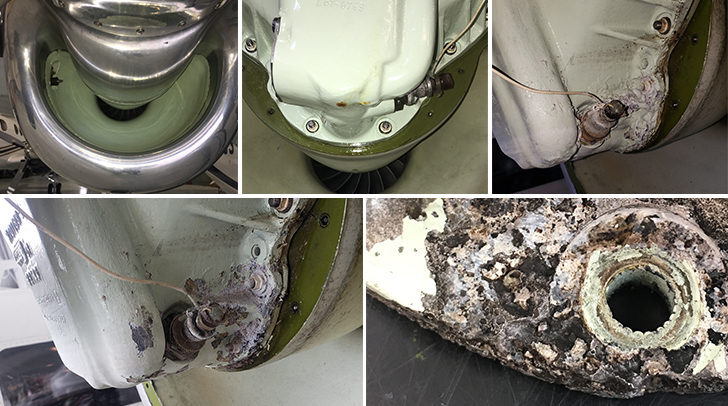By Ron Butler and Tom Hudak, Winner Aviation

Has your doctor ever told you to cut down on your salt intake? Aircraft engines have some of the same issues. If you are based near a salt-laden environment you are especially susceptible to salt and the damage it can cause to your aircraft.
Everyone is aware of the problems that the environment causes to all things living or not. Your engines and the magnesium housings are not spared from the damaging conditions that this harsh environment will throw at your machine. Have you ever looked at your engine intakes and wondered what that little button is on the bottom of the so-called smile inlet? The button is there to drain water. The rubber cowling seals do a fairly good job of keeping the environment out of your engine nacelles. Unfortunately, they are not 100 percent efficient. How often have you had those rubber seals changed?
During flight, even in heavy precipitation, any accumulated moisture is drawn away by a scavenge tube located at the bottom of the smile inlet. Also, the heat generated by the hot, circulating oil will evaporate any accumulated moisture. The problem comes when your aircraft has been stagnant for some period of time and subject to rain, snow, or high humidity, especially in salt-prone areas.
The other major problem is that the front half of your engine is made out of magnesium. Magnesium, a great strong and lightweight material, does not corrode like most metals with which we are familiar. Steel, aluminum, and iron all get surface corrosion that spreads out on the surface before really penetrating into the material. Magnesium is like your teeth. When manufactured it is treated and the surface has a hard coating to protect it. However, once bare material is exposed, corrosion grows inward like a cavity in your teeth. Soon, as the corrosion progresses, it can grow inward and cause major pits and damage beyond repairable limits, and will continue to spread and possibly cover a large area.
So, the next time you are doing your thorough walk-around and getting ready to put your aircraft back in the air, or any time it has sat outside, push up on that little button and verify that no water has collected in your intake.
